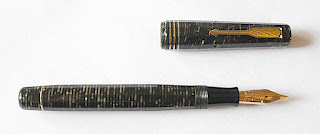We spent most of the day Tuesday touring through the so-called Seven Cities of Cibola sought by Coronado and earlier conquistadores as great repositories of gold and diamonds. Our guide was Kenny Bowekaty, a Stanford trained archaeologist who now leads tours for the Zuni Cultural and Arts Center. Under Kenny’s lead the Zuni Center is aggressively seeking to promote ethno-tourism and is working with international tour operators to this end.
Standing among the ruins of several different pueblos, Kenny gave us a tour of the Zuni culture, their migrations, their ancient forebears, the Paleolithic Anasazi; the origins of the A:shiwi (Zuni) people; their habitations; their fraught early relations with the Spanish; and the horrors of war. As it happened, we were here 479 years almost to the day, when Coronado showed up and attacked the village of Hawikku. For any number of reasons related to both resistance and accommodation, the Zuni kept their ancestral lands, but the Spanish with their guns and crosses permanently altered the Zuni landscape.
 |
| One of the Zuni ancestors, the Horned Toad, was there to welcome us |
 |
| Kenny demonstrates th old style of monochrome pottery |
 |
| Around 1400 the Zuni developed polychrome |
 |
| Kenny further discusses pottery |
 |
| A brief walk led us up to the foot of one of the holy sites on a butte overlooking the pueblo |
 |
| The Zuni mission in Halona at the heart of the pueblo |
Much later, in the first quarter of the twentieth century, the pueblo was again attacked, this time by archaeologists whose excavations in search of architecture disrupted countless cultural artifacts which still have not been properly evaluated.
Today the Zuni follow the old ways religiously and culturally, but are more open to the influences of Anglo society than their Hopi cousins.
It was an entertaining and educational day.
















Comments